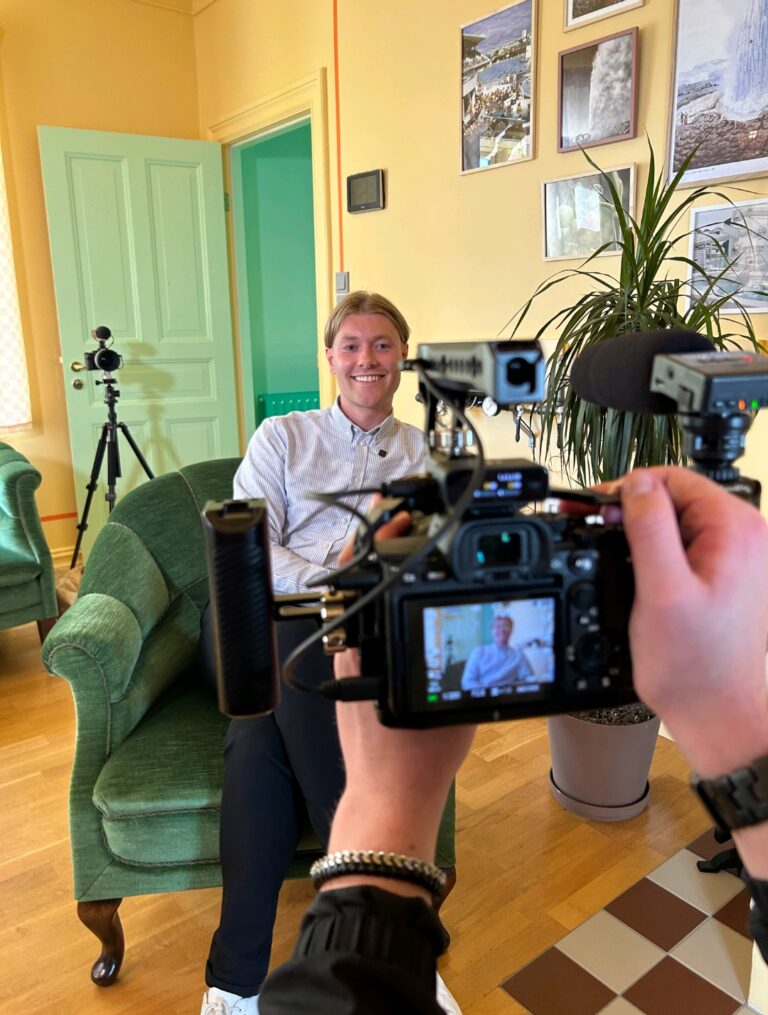The Ministry of Education and Children, in collaboration with The National Queer Organization Samtökin ’78, published today a groundbreaking educational material titled “LGBTQ+ Children and Young People in Sports, Leisure, and Youth Activities: Guidelines for Those Responsible”. GayIceland caught up with Sveinn Sampsted to discuss the significance of these materials and their impact expectations on inclusivity in sports, leisure and youth activities.
Could you provide our readers with an update on your work concerning queer representation in sports since our conversation in January 2024? Have there been any significant development or changes since?
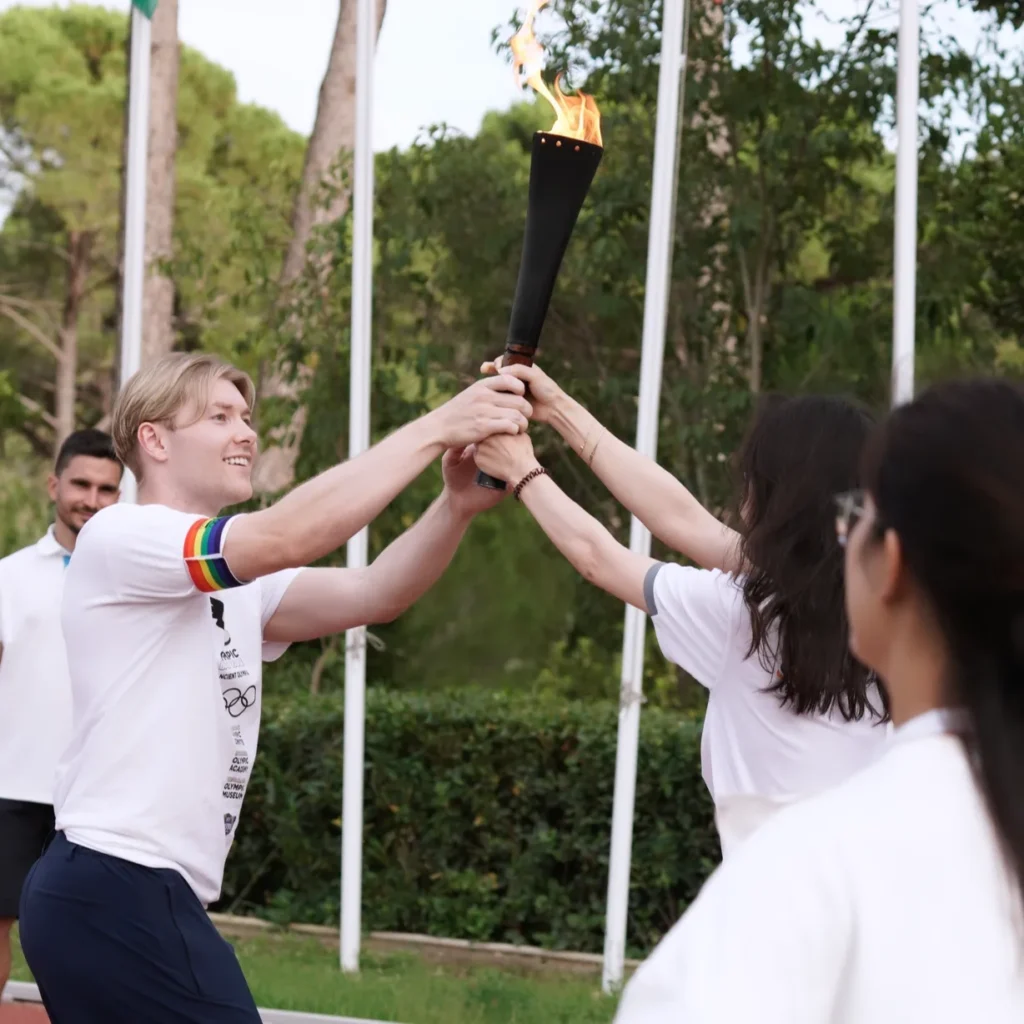
“This year we have reached a turning point. Since I started in 2022 I have had to be proactive and send information to the sport clubs and try to sell them the idea of getting education on queer people in sports. Now the clubs/organizations have started to contact Samtökin ’78. Every presentation, panel or project I have done this year has been done on their initiative. Which includes the panels during the Reykjavík International Games, workshops for football coaches getting UEFA B3 education or presentations for the staff of Varmá sport facility in Mosfellsbær. I feel like we have been able to normalize our education within the sport movement.
Then in June I spoke about queer people in sports for the first time abroad. I was a young Olympic ambassador for Iceland in Olympia, Greece. Where 140 ambassadors from 80 countries took part in the 64th International Session for Young Olympic Ambassadors. It was an amazing experience I will never forget. I got to give a presentation in the Olympic Academy, run with the Olympic torch with a rainbow armband and gave an interview about nonbinary athletes for the Dutch National Olympic Committee. The topic was well received. Some said I was the first openly queer person they had talked to. They had many questions, and we had discussions about being queer in countries where it might be illegal or there is a death penalty.”
What has been the focus of your recent project in the past few months?
“I always focus on improving these 6 topics: Education, Role models, Visible support, Stop discrimination, Improve facilities, Regulations and other specific issues.
In the beginning the focus was on creating educational material for presentations and workshops. In the educational material I always mention ways of being supportive. It can be shown through symbols (rainbow flags, armbands, lanyards etc), words (posts on social media, talking about queer issues in a positive way) and acts (stopping discrimination). Stopping discrimination is in my opinion the most important issue I am working on and we also teach people how to identify discrimination and how to stop it when it happens but also how to prevent it. That knowledge can be applied to stopping ableism, sexism, racism etc. Working on these issues has a positive effect on all queer people. But then we have some issues that only effect a part of them. Such as creating inclusive locker rooms and creating guidelines for trans and intersex people.
But to answer the question, my focus today is combining all those aspects into one educational package which is coming out on the 28th of October 2024.”
This educational material is called ‘LGBTQ+ Children and Young People in Sports, Leisure, and Youth Activities: Guidelines for Those Responsible’. Its the first project of its kind and is part of the governments first plan af actions regarding queer issues.
Could you elaborate on the contents of the educational resources designed for individuals working with children and teenagers in youth and sport programs? What specific topics or guidance can one expect to find within these resources?
“This educational material is called ‘LGBTQ+ Children and Young People in Sports, Leisure, and Youth Activities: Guidelines for Those Responsible’. It is published by The Ministry of Education and Children, in collaboration with The National Queer Organization Samtökin ’78. Its the first project of its kind and is part of the governments first plan af actions regarding queer issues.
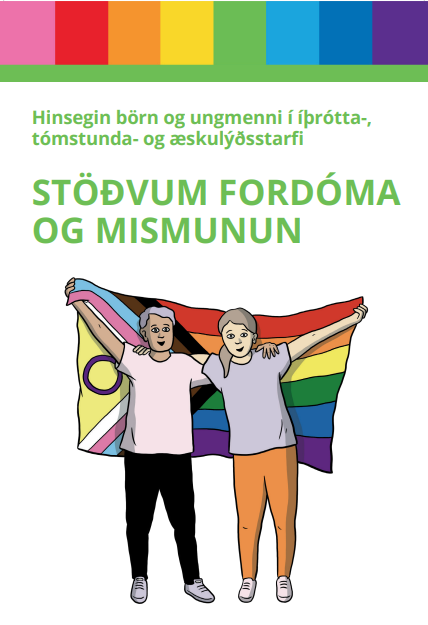
I started working on this material in 2022 and it is split into three brochures: 1. How to stop discrimination. 2. How to be supportive. 3. Facilities, competitions and events. We sent out a survey in 2023 asking what discriminatory words or phrases you have heard, have they been subjected to or seen discrimination, if so what did it look like, and then what do we need to fix (see here). Along side this I wrote down almost every question I got during my presentations or workshops. I have now spoken to around 2000 coaches, teachers, athletes and other staff members in the sport movement, leisure and youth activities. I think I should have gotten all the most common questions by now and they are answered in this educational material. Although the project was handed to me, I have not been working alone. I got a lot of help and advice from my co-workers in Samtökin ’78, and I want to give a special shout out to Þorbjörg Þorvaldsdóttir who created the posters with me and is working with Sveinn Snær Kristjánsson proofreading and creating the finished product and then of course Elías Rúni who drew these amazing pictures.
I have spoken to parents of trans children who are turning 13 and are trying to change the next age category so their child can continue competing in the group they identify with. While also questioning if some sports need to be gendered to begin with.
In the first brochure we talk about how to create preventive measures such as a code of conduct and ways to report discrimination. Then we have educational resources for coaches, teachers, referees etc on how to step in and stop discrimination. We created 2 posters along with this chapter. One poster shows how discrimination leads to queer drop out and the second poster shows what discrimination looks like. If people are not aware that something is discriminatory they wont stop it so we are teaching people to identify the problem. Then the last picture is on creating a inclusive and safe sideline.

Brochure 2 focuses on how to be supportive. What to do when a person comes out or if you suspect a person is queer and you want to make it clear that you are supportive. We teach people that queer people don’t read minds, so they must show that support through symbols, acts or words, like is shown in the pictures. It also has guidelines on how to support a queer person when travelling to a country that is not welcoming to queer people. It also goes through a lot of specific topics such as, how to divide into teams in an inclusive way, decreasing gender dysphoria or using inclusive language.
Chapter 3 focuses on how to create inclusive facilities. The locker rooms, bathrooms, the gyms etc. While also answering commonly asked questions about the use of locker rooms and other specific questions.
It is honestly quite difficult to summarize it since it answers so many different questions, but the main goal is minimalizing the drop out of queer youth by creating a inclusive and safe environment.”
Can you provide insight into “Trans börn og íþróttir” (Trans children and sports) project initiated in 2020? What are the key aspects of collaboration with sport clubs, and what are the main challenges encountered?
“’Trans börn og íþróttir’ (‘Trans children and sports’) was an important first step, creating guidelines for 12 years and younger or before puberty. We started work in 2019, the same year The Law on the Gender Autonomy Act (lög um kynrænt sjálfræði) was passed. It covers the basics and today we are building on that foundation with a project which is being led by ÍBR. The goal is to create broader guidelines on the issue of trans athletes. It will most likely be in some stages, but we want to extend the rules to 12 years and older. Answer questions that were not answered in ‘Trans börn og íþróttir’. It will all become clearer as work progresses.”
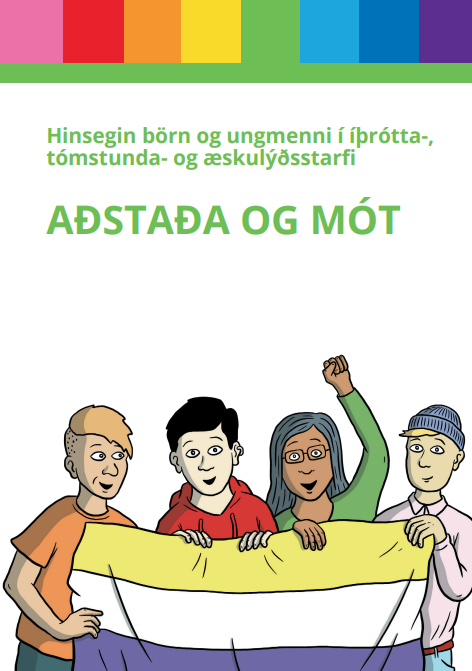
Have you had discussions with trans athletes? If so, what are the primary challenges they face within sports the community?
“Yes, both with athletes, their families and coaches/teachers working with trans people.
Well, they face many of the same problems other queer people face. Lack of education, low visibility of role models, the need for support and fighting against discrimination and disinformation.
With the added stress of fighting against bans and discriminatory regulation, non inclusive facilities and various factors that can cause gender dysphoria.
The main thing we need to do is to answer all questions before hand. All athletes should have a clear view of how their athletic career is going to develop. There is a lot of uncertainty in many cases regarding regulations. I have spoken to athletes which have been banned from competing in certain tournaments in sports such as athletics, swimming, disc golf and chess. These rules can change quickly meaning an athlete is always guessing whether they can continue. That causes a lot of anxiety and stress. It also kills dreams knowing that you have a glass ceiling stopping you from going all the way. Trans people should, like everyone else, be able to pursue their dream of becoming a professional athlete. But this also has an effect on the younger categories in Iceland. I have spoken to parents of trans children who are turning 13 and are trying to change the next age category so their child can continue competing in the group they identify with. While also questioning if some sports need to be gendered to begin with.
I have spoken to athletes which have been banned from competing in certain tournaments in sports such as athletics, swimming, disc golf and chess. These rules can change quickly meaning an athlete is always guessing whether they can continue. That causes a lot of anxiety and stress.
It is important to have inclusive locker rooms. Those can also be used by those with colostomy bags, disabilities, intersex people and those who need assistance. So, it is a win-win on so many levels to have this addition to the facility. Then there are more specific measures that can be taken, which we mention in the educational material, such as having a area in the gym with no mirrors, since some trans people experience dysphoria watching themselves in the mirror.”
In your opinion, what changes are necessary within Icelandic sports to foster a more trans-friendly environment?
“I personally think we need a trans and/or intersex person to follow in my footsteps and do the second wave of queer education in the sports movement. Some people have never spoken to an openly trans or intersex person so hopefully by talking to them and seeing they have much more in common than they thought, love for sports for example, it gives it a face and humanizes the group. I personally know a few trans athletes who are already great role models, competing for national teams and winning medals abroad. I would love to see them in the role of an educator. That’s the future I see at least.”

Has there been any noticeable shift or impact on your athletic career since publicly identifying as gay?
“Yes. I will start with the positive. Since coming out in 2013 at age 17 I have seen that the most people are either neutral or supportive. When coming out I received so many supportive messages, a lot of hugs and support.
My favourite moment was when I was competing in the 200m at the same time as pride in 2014. I was wearing rainbow socks and was still quite shy at that point. I was wondering what reaction I would get. Then my competitors jogged to my starting block, gave me a hug and said, “happy pride” and added “but we are still going to beat you”. I have a lot of those moments.
Then I really cherish a phone call I got during new years in 2016. One of my teammates called me and said “Svenni I just wanted to call you and tell you I am coming out of the closet. You are the first to know and you inspired me to come out”.
I have gotten a few of these messages. One this new year as well (I did tear up a bit just thinking about it).
But now on to the negative. I have always been quite hesitant talking about the negative experiences I faced. The story of Justin Fashanu did have a big impact on me and all the talk in the media about it being dangerous to come out in sports, especially in football. The most memorable headline being ‘Don’t come out of the closet’. So, in my work I have wanted to highlight the good and the positive, to balance out the negativity. I still try to do my work on a positive note, but I have also learned the importance of telling the whole story.
When coming out I received so many supportive messages, a lot of hugs and support. My favourite moment was when I was competing in the 200m at the same time as pride in 2014. I was wearing rainbow socks and was still quite shy at that point. I was wondering what reaction I would get. Then my competitors jogged to my starting block, gave me a hug and said, “happy pride” and added “but we are still going to beat you”.
Firstly, I was thrown out of the closet. The first teammate I told in confidentiality I was gay basically went around telling people. Which I wasn’t ready for and made me feel horrible.
After coming out I noticed that homophobic slurs decreased but on the flip side now I felt direct homophobia. There were a few individuals who bullied me for being gay. It started out as homophobic jokes and laughing in my face. When I went to the bathroom they said “he has a 3-inch hole, he shits donuts”. They said it in front of my coach at that time who never stepped in. Then it became worse. They took athletic tape and slapped it on my butt and said, “we have marked the gay” or when I was about to sit down a small cone was put under me and they said, “gays want something in there”.
During the worst of it I did cry at home after practice, but I was always determined that I wouldn’t let it stop me, it never did. Those individuals have since apologized and have even defended me when others have been homophobic.
I didn’t really recover from that period until I got help from the therapists working at Samtökin ’78.
But it has decreased to almost nothing and I don’t remember a single incident from my lectures where I faced direct homophobia.
Today I am super happy about the decision of coming out and it has made my athletic career so much more enjoyable. In general, the positive outweighs the negative by a mile.
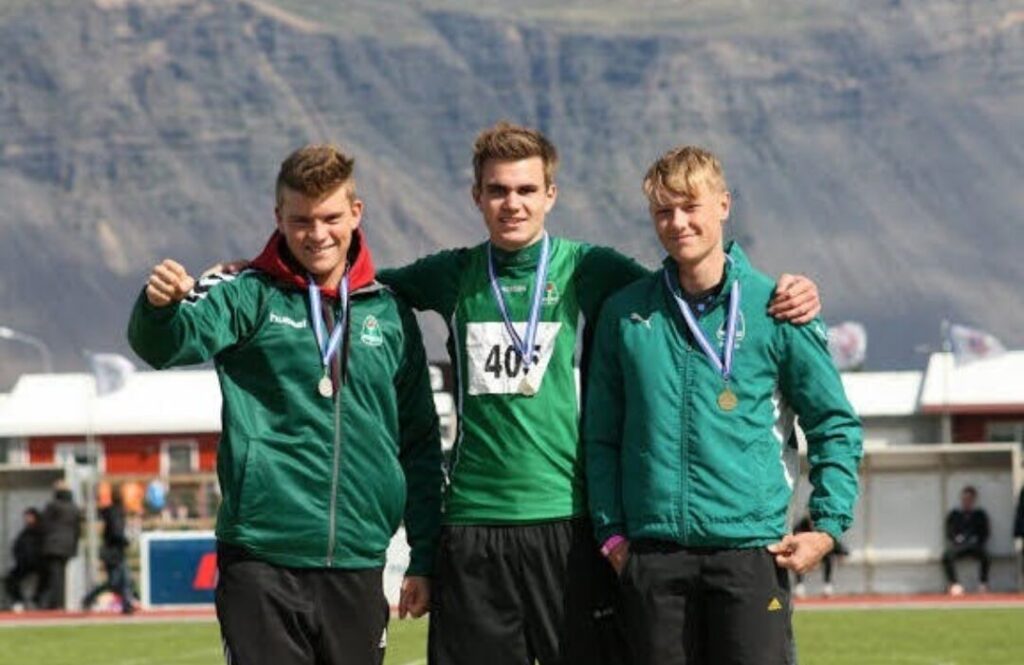
The presentation of the educational material on the 28th of October will be my last presentation for Samtökin 78. Therefore, I want to end by thanking Samtökin ’78 for all the opportunities and support they have given me. I will be forever grateful for giving me a voice and creating a platform where I was able to speak on behalf of those who don’t always have a voice. Especially those in the closet. It has been a very interesting journey which I will continue within the sport movement in my new job working for ÍSÍ and UMFÍ.”

